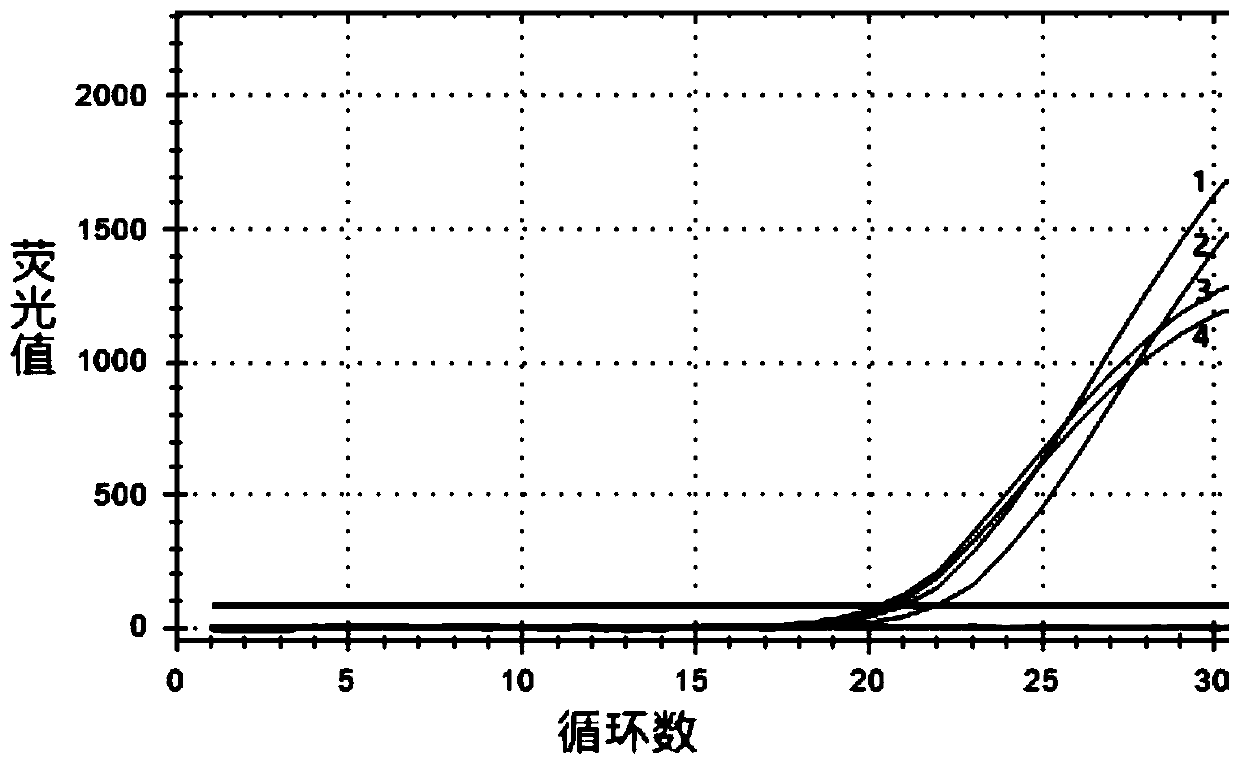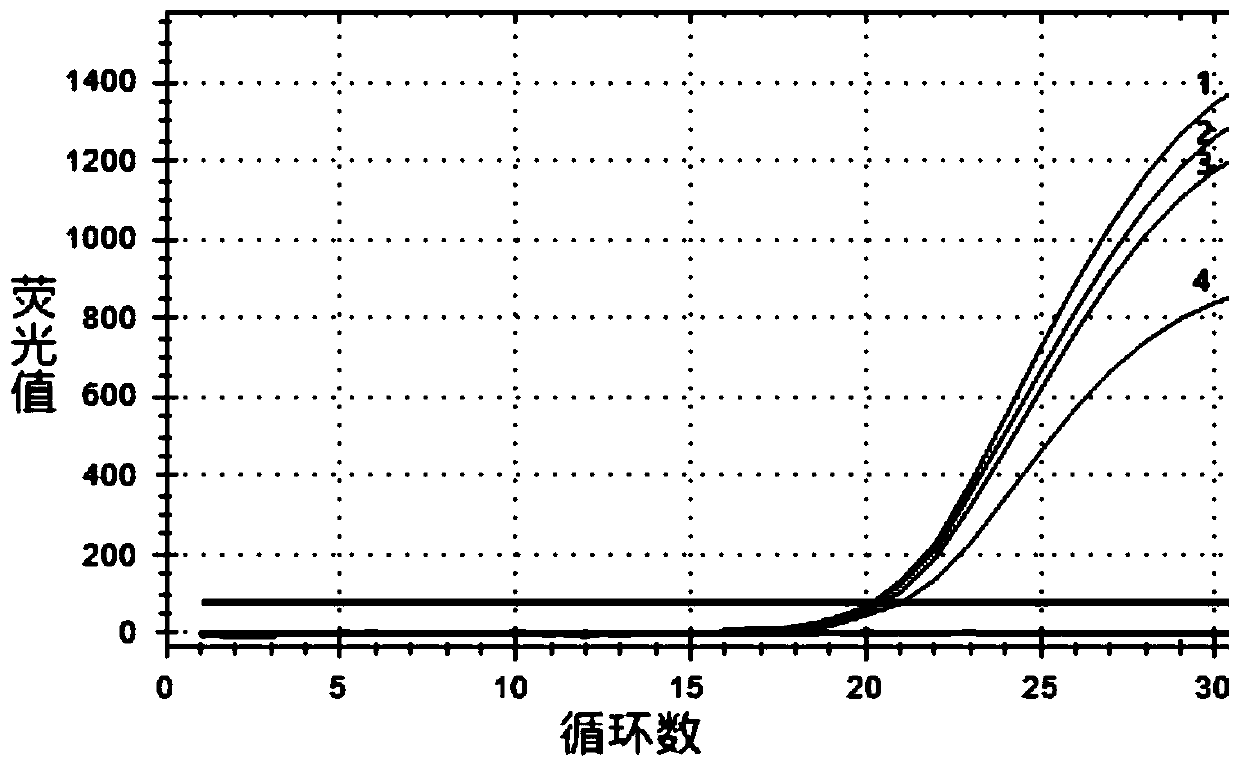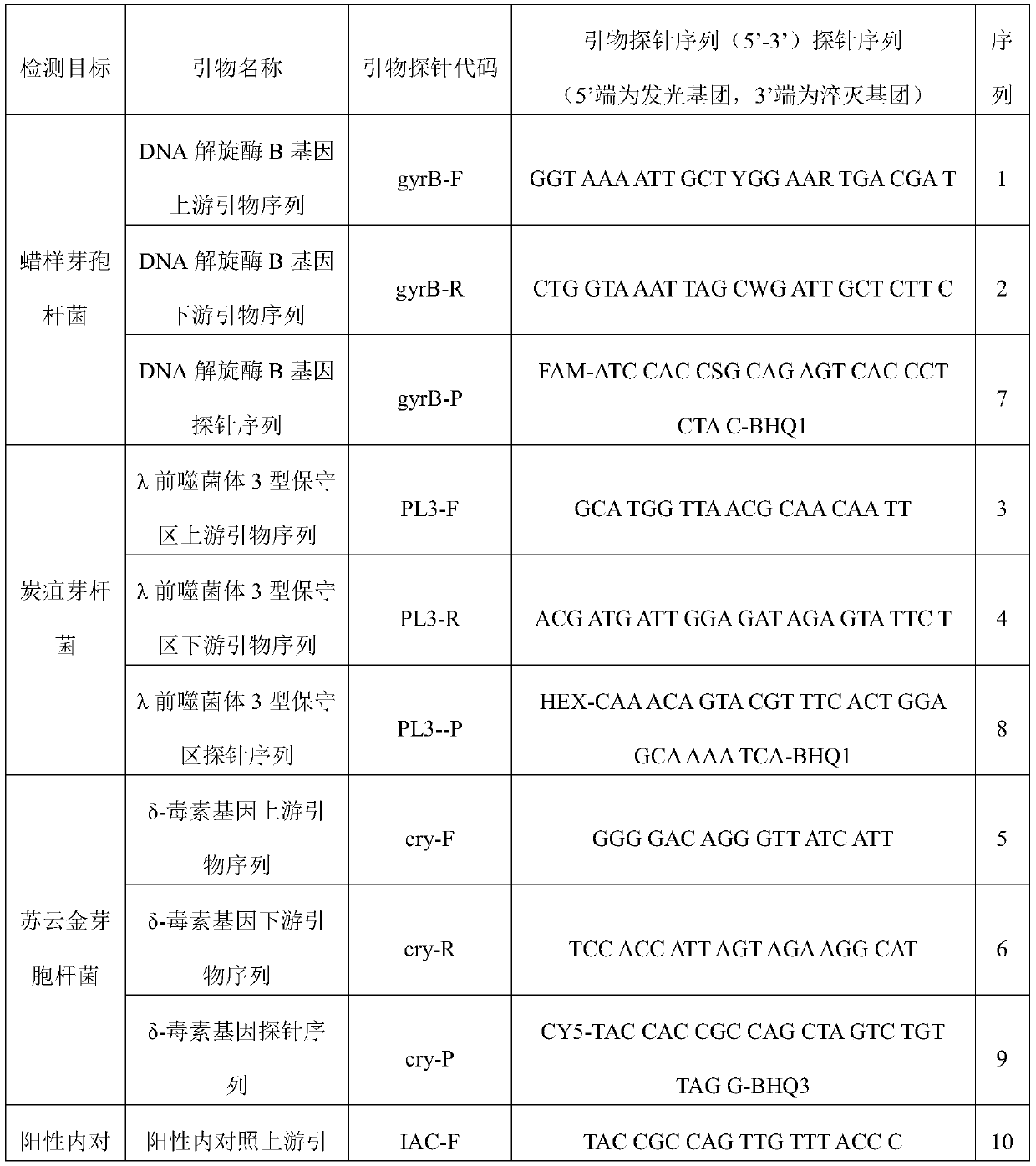Fluorescent quantitative PCR primer probe and kit and method for detecting three kinds of bacillus
A bacillus, primer probe technology, applied in biochemical equipment and methods, microbial measurement/testing, DNA/RNA fragments, etc., can solve the problems of manpower consumption, reagents and time, complicated process, and insufficient detection sensitivity , to save time and increase sensitivity
- Summary
- Abstract
- Description
- Claims
- Application Information
AI Technical Summary
Problems solved by technology
Method used
Image
Examples
Embodiment 1
[0061] Embodiment 1 Formation of Bacillus cereus, Bacillus anthracis and Bacillus thuringiensis triple fluorescent quantitative PCR detection kit:
[0062] The kit consists of 5× reaction system buffer, Hotstar DNA polymerase, 10× primer-probe mixture, positive control, and ultrapure water. The specific components are as follows: 5×PCR buffer (Tris-HCl 100Mm (pH 8.3), KCl 100mM, Tween-20 0.2%, pET28a 0.0003ng, 5mM dNTPs, 20mM MgCl 2 ); 25× Hotstar DNA polymerase (2U / μL); 10× primer-probe mixture (as shown in Table 1, the concentration of each primer including the positive internal control (pET28a plasmid template) is 3 μM, each probe The concentration of the needle is 2μM); Positive control (mixed template of Bacillus cereus, Bacillus anthracis and Bacillus thuringiensis, each is 10 6 CFU / ml).
[0063] The kit detection reaction system is 25 μL, and its configuration is as follows: 5×PCR Buffer 5 μL; 25×DNA polymerase 1 μL; 10× primer mixture 2.5 μL; template 2 μL, ultrapure...
Embodiment 2
[0064] Operation and result judgment of embodiment 2 kit
[0065] 1. Genome extraction
[0066] Take 1 mL of enrichment solution from food samples, centrifuge at 13,000 rpm for 5 minutes, discard the supernatant, add proteinase K to digest at 55°C for 1 hour, and use the boiling method or a commercial kit to extract the DNA of the target bacteria to be tested as a test sample.
[0067] 2. Preparation of reaction system
[0068] Take a 200 μL PCR tube and configure a 25 μL reaction system, which is configured as follows: 5 μL of 5×PCR Buffer; 1 μL of 25× DNA polymerase; 2.5 μL of 10× primer mix; 2 μL of template, and 14.5 μL of ultrapure water.
[0069] 3. PCR reaction
[0070] Put the PCR tube into the CFX96 fluorescent quantitative PCR instrument, and perform the PCR reaction according to the following procedure: 95°C for 10 min; 95°C for 15 s, 55°C for 30 s, cycle 10 reactions; 95°C 15 s, 60°C 30 s, cycle 30 reactions, Amplification results such as figure 1 shown.
[00...
Embodiment 3
[0077] The shelf life test of embodiment 3 kits
[0078] to 10 5 CFU / mL The mixed template of Bacillus cereus, Bacillus anthracis and Bacillus thuringiensis is the test sample for evaluation. On day 0, it is divided into 9 parts and stored in a -70°C refrigerator. The completed kits were stored at -20°C, and kits of 0, 10, 15, 30, 60, 90, 120, 150, 180, and 360 days were used for storage test. The test results of the shelf life are shown in Table 3:
[0079] Table 3 shelf life test results
[0080] shelf life
[0081] It can be seen from Table 3 that the kit is stored in a -20°C refrigerator, and it is effective in detecting the three target bacteria at different storage periods. The experimental results show that the storage period of the kit is at least 6 months.
PUM
 Login to View More
Login to View More Abstract
Description
Claims
Application Information
 Login to View More
Login to View More - R&D
- Intellectual Property
- Life Sciences
- Materials
- Tech Scout
- Unparalleled Data Quality
- Higher Quality Content
- 60% Fewer Hallucinations
Browse by: Latest US Patents, China's latest patents, Technical Efficacy Thesaurus, Application Domain, Technology Topic, Popular Technical Reports.
© 2025 PatSnap. All rights reserved.Legal|Privacy policy|Modern Slavery Act Transparency Statement|Sitemap|About US| Contact US: help@patsnap.com



